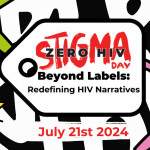The confidential letter arrived in March 1986. “To Be Opened Only by Addressee” glared at me in red letters. I will never forget opening it and reading: “You should see a doctor immediately, as your blood test came back positive for HIV.”
I contemplated my death. It took me months to summon enough courage to tell my partner, almost passing out as I said “HIV.” Thankfully, he was understanding and supportive. A visit to the health department confirmed I’d tested positive, while he tested negative.
And so began my journey living with HIV, along with the blessings that culminate in my announcement that I am thrilled and humbled to be joining the Prevention Access Campaign as North America executive director.
Despite the shame, fear and stigma I felt in 1986, I took control of my future by calling a doctor and talking openly. My doctor provided excellent care and emotional support during a painful and frightening period of my life.
Craving information and a community, I called Project Inform. I received a call back from Marty Delaney who talked me through what I could expect and introduced me to a network of support. I connected with people living with HIV who helped others facing similar issues.
I am privileged to have benefited from support and access to care. I benefited from effective treatment beginning in 1996. Too many of our friends did not. I am fortunate that newer medications have allowed me to maintain an undetectable viral load for 10 years.
Like others who were undetectable, I came across a Swiss study in 2008 that concluded that individuals with an undetectable viral load could not sexually transmit the virus. I thought that was such a misguided concept. I felt the study must be wishful thinking.
Bruce Richman’s Facebook message in early 2016 was equivalent to my connection to Project Inform. He discussed the need for the consensus statement he had developed to clear up mixed messages about risk and to confirm that undetectable equals untransmittable (U=U).
At that time, I was serving as executive director of NASTAD [National Alliance of State and Territorial AIDS Directors]. Bruce pleaded for NASTAD to sign on to the consensus statement. I wanted the dream ignited by the Swiss study to become reality.
With the support of my senior staff, I decided to take the leap and sign on. Later, when I announced the endorsement to NASTAD’s board, members expressed concern that the Centers for Disease Control and Prevention had not yet agreed with the statement.
I informed the board that it was our role to lead on U=U, which had unprecedented potential to reduce stigma, improve people’s well-being and prevent new transmissions. We did not need to wait for the government’s approval. NASTAD’s leadership agreed.
U=U is only part of a one-two punch against shame and stigma. The other part is pre-exposure prophylaxis (PrEP), which is crucial for preventing new HIV cases. But in 2016, when I learned about U=U, it was my first real opportunity to shed my own stigma.
A battle with prostate cancer motivated me to reevaluate my priorities. I decided to move beyond being defined by my story to tap into my passion. The decision meant saying goodbye to NASTAD and focusing on U=U.
I bring to Prevention Access Campaign a focus to end HIV stigma. That determination will call on me to ensure that U=U is a valued basic concept in sexual health, improving the well-being of all people living with HIV and bringing us closer to ending the epidemic.







Comments
Comments